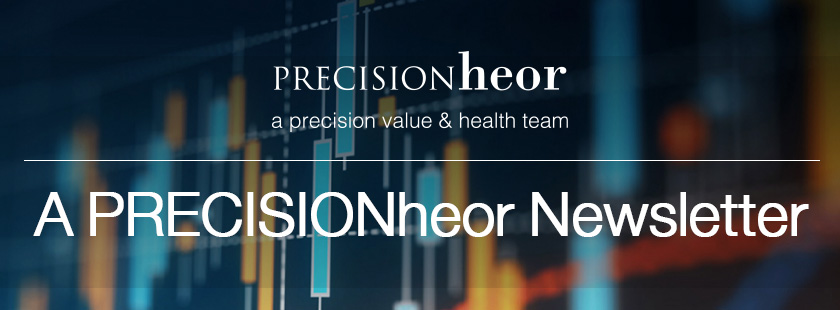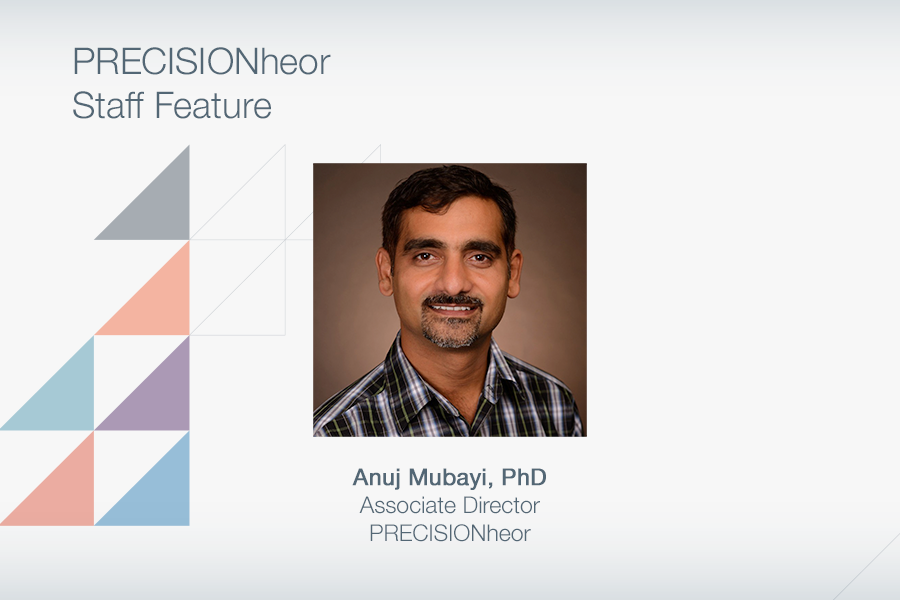In this edition of the newsletter, we profile Associate Director Anuj Mubayi as he offers his insights into his new PRECISIONheor team, a recent PLOS Liver study, the future of applied health economics research, and more!
What excites you about getting to work with the PRECISIONheor team?
- Practical data-driven projects such as economic evaluation of rapid COVID diagnostic tests
- Interdisciplinary, collaborative, and supportive environments that make me feel as a part of the family
- Flexibility of allowing myself to engage in professional development activities even outside PRECISIONheor and encouraging scholarly articles
You recently completed a very interesting PLOS Liver study. Can you talk to us a little bit about that?
In this PLoS One research, we explore and provide a tool for physicians to timely identify patients who may have a condition of critical liver injury (LI) over time. The cause of LI can be due to an underlying condition such as shock, trauma, drug abuse, or surgery. The research work, a collaboration with researchers from many institutions, including University of Wisconsin-Whitewater and the University of Texas Southwestern Medical Center, has developed a novel mathematical model, which is one-of-a-kind and will have tremendous impact in clinical science. The study uses model- and patient-reported biometric data to predict potential patients that may have serious LI in the future. This information will be critical in saving many lives as well as improving quality of life. The eventual goal of our work is to develop a physician friendly software tool, a dashboard, that uses patients’ biomarker readings at the time of admission via an accurate mathematical model as a power engine behind the dashboard to assist practitioners in timely diagnosis and prognosis for patients that may have LI in the future.
What do you see as the future of applied health economic modeling?
The ongoing COVID-19 global pandemic, an unprecedented public health challenge requiring significant resources to evaluate and determine the best solutions from a health and economic perspective in a timely manner, has highlighted limitations in existing modeling approaches in health decision science. Novel health economics modeling techniques and real-time data, which need to support accurate decision making in real time, are in urgent demand. Future developments should focus on the integration of health economic models with system-dynamics approaches, such as multiresolution methods that include multiobjective optimization methods, human behavioral models of adoptions and choices, and nowcasting models, to actually support decisions in medical product development. This will require adapting and extending nowcasting techniques, common in other disciplines, an approach that attempts to estimate accurate health outcomes in real time using modeling techniques and multiple dimensional empirical information, such as harnessing social media data and location-based services for obtaining both health information management and population behavioral mechanisms.
Lastly, a simple one: what is your favorite movie/book/sport?
- The Tipping Point: How Little Things Can Make a Big Difference by Malcom Gladwell. In this book, the author nicely highlights the tipping point phenomenon using real life examples in which how and when simple issues can spread like wildfire from person to person. I find the book amazing probably because my research interests in infectious diseases dynamics aligned with some concepts in common. Gladwell introduces personality traits that make one a natural pollinator of new ideas and trends via examples such as fashion trends, smoking, riots, religious views, and a successful high-tech company to show how to start and sustain social epidemics.
- I am passionate about playing field hockey. I started playing hockey at the age of 6 in a small remote town of Kanpur city in India. Since then I have participated in numerous national and international hockey tournaments. I am currently part of U.S. Masters men’s field hockey team (https://www.teamusa.org/USA-Field-Hockey/Features/2020/February/19/2020-US-Mens-Masters-Training-Squads-Named). I regularly (2/3 times a week) play with my local “sun-devils field hockey club-Tempe.” A nice 1:30 hrs of hockey relaxes me from my hard day work while strengthening my fitness level. The game of field hockey naturally improves balance, coordination and agility, since very quick reactions are demanded while playing. I often travel with my team to play in tournaments and meet and make new friends.
In addition to our Q&A, Anuj recently wrote a terrific article that we wanted to share. Appearing in Siam News, Anuj discusses his transition from academia to the team at PRECISIONheor—embracing a career change and fostering interdisciplinary practical thinking. This is a great read for any and all scientists and researchers looking to step away for the bench/classroom: “Transitioning from Academia to the Healthcare Industry.”


